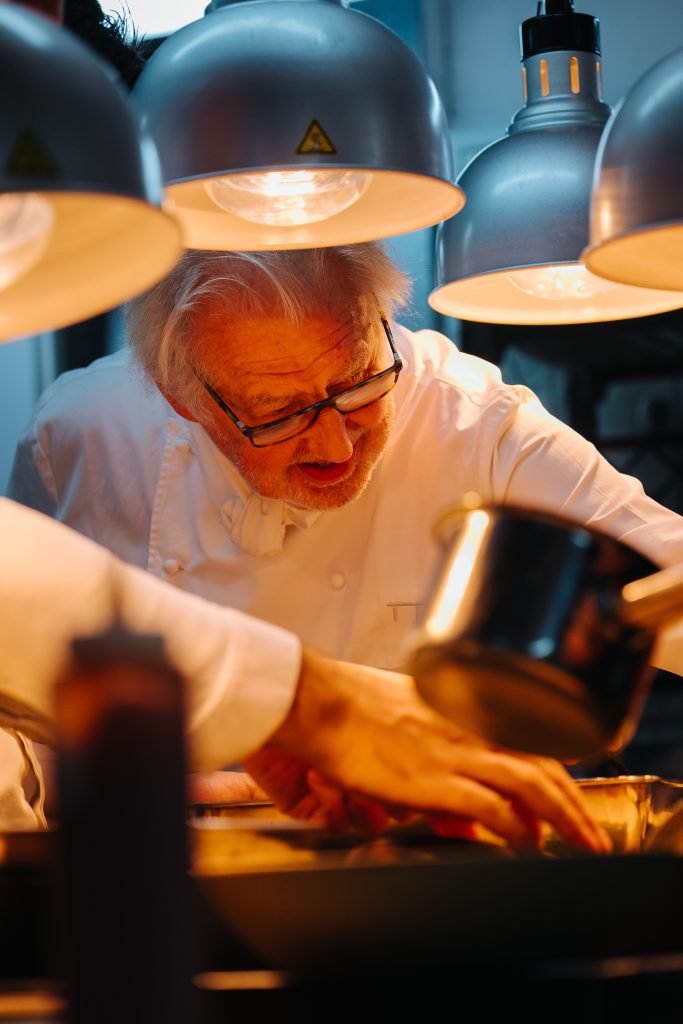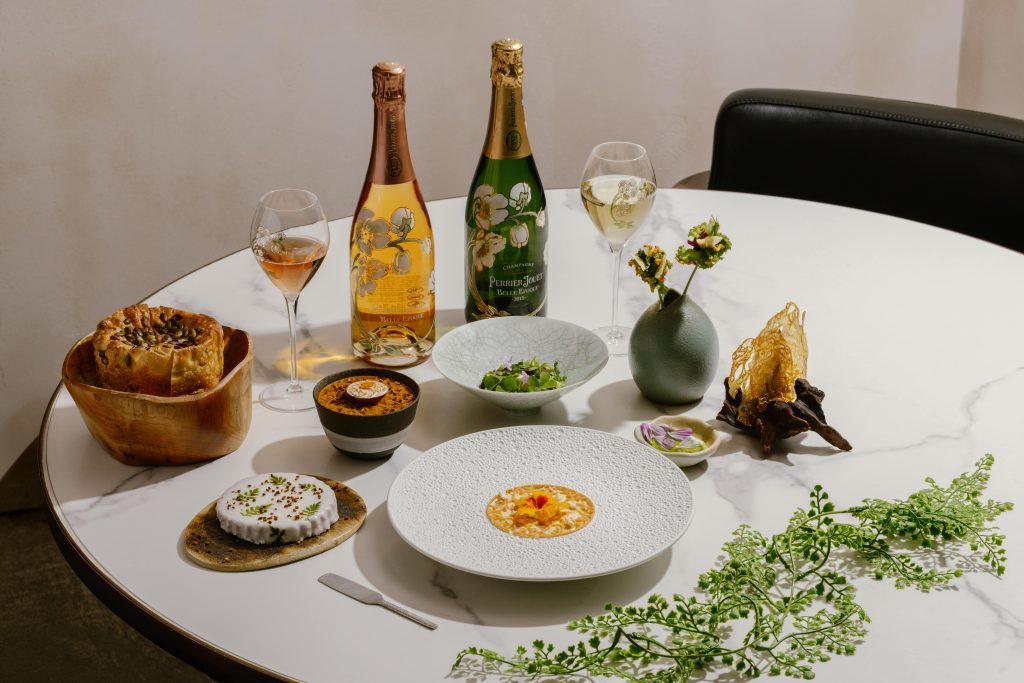Renowned for his poetic approach to cuisine, Pierre Gagnaire has built a reputation for turning classic French gastronomy into an ever-evolving, emotionally charged experience. The venerated French chef tells Stephenie Gee about his journey

Pierre Gagnaire, the famed Parisian restaurant, has been in business for 29 years but Pierre Gagnaire, the person, now 75, has been cooking for much longer. Born in Apinac in France’s Loire region, the eldest of four and son of a Michelin-starred chef, he was expected to follow his father into the profession. By age 14, he was working as a pastry chef at Nelson in Saint-Étienne, and a year later spent a summer with the late Paul Bocuse, followed by a stint at Jean Vignard’s Juliette in Lyon. Over time, what began as an obligation evolved into his craft and passion, with Gagnaire realising that cooking could evoke emotions, create bonds and give meaning to life.
In 1976 – after working in restaurants across France, serving in the French navy, and hitchhiking from Quebec to Acapulco – Gagnaire was summoned to return to and take charge of his father’s restaurant Le Clos Fleuri in Saint-Étienne. It was a testing time, as he struggled to find the space and freedom to express his own creative vision. “At the age of five, I had a chef’s hat on my head. My father managed a hotel in Val d’Isère, so my fate was sealed. But my real passion for cooking began only when I started working for myself,” he recalls. “I find what I enjoy most about cooking is the social bond that is created between those who make it and those who eat it. It’s a great opportunity to create something made with your hands that is immediately consumed, thus providing an equally immediate return.”
When his father retired and closed the family restaurant in 1981, the young chef struck out on his own, opening an eponymous restaurant in the centre of Saint-Étienne, which was awarded a Michelin star the next year, and another by ’86. It was here that Gagnaire was able to truly indulge his talent and ambition, bending the strict rules of French cuisine to create dishes so bold, daring and profoundly inventive – think langoustine tempura, oysters in lettuce leaves and beef jelly with fresh goat cheese – that they at once surprised, delighted and sometimes confounded diners. In 1992, Gagnaire relocated his restaurant to a restored Art Deco mansion, also in Saint-Étienne, and the next year was elevated to the coveted three-star status.
And then, quicker than it had all begun, the dream came crashing down. In 1996, his extravagant taste for the best sent him bankrupt and he was obliged to close it down. But financial failure didn’t deter the chef for long. With the support of family and friends, he opened his next venture in Paris just six months later. “I was from the city of Saint-Étienne, which wasn’t at all suited to this type of restaurant,” Gagnaire reflects. “I had to rethink my entire life while maintaining the essentials: the way I approach and prepare my cuisine. For 20 years, I lived my profession like an artist building a masterpiece. This failure forced me to consider my work also as a business.”

His new restaurant – the now-legendary Pierre Gagnaire at 6 Rue Balzac – quickly climbed the ranks, receiving two stars in 1997 and a third in 1998, which it has maintained until now. The turn of the century brought with it further reward, marking the beginning of Gagnaire’s long-standing collaboration with the French chemist and father of molecular gastronomy Hervé This. Gagnaire has since established a gastronomic empire spanning 15 establishments across the globe – including Paris, Nîmes, London, Da Nang, Shanghai, Seoul and Dubai – and 13 Michelin stars. He makes it a point to visit each of his locations on a regular basis – partly because he is determined that each and every member of his team, in every country, knows who he is and what he stands for, but also because he is still a man enchanted by his work.
Decades in, Gagnaire finds motivation and drive in “living up to daily customer encounters and the young people who join us with their enthusiasm and desire to grow alongside us,” he says. “Success to me is the feeling of having given meaning to my life by doing this job. So I am 100% invested in my work. It requires you to be rigorous, demanding, attentive, serious and psychologically strong. Therefore, you have to be passionate and have a genuine desire to please. And thanks to new means of communication, I can maintain a regular relationship with my teams around the world. One of the challenges is to constantly build and strengthen good relationships with teams and partners. Alone, I am nothing.”
Creating community is integral to Gagnaire, and something he has been able to explore even more through collaborations. Most recently, he made his way to Hong Kong for Perrier-Jouët’s “House of Wonder”, a month-long celebration of fine dining meets exquisite champagne, where he was joined by chefs Jonathan Soukdeo of Rosewood Hong Kong, and Joris Rousseau and Romain Dupeyre of the one-Michelin-starred Feuille and Racines respectively, to present a series of innovative dishes that evoke the essence of nature through captivating flavours and artistic presentations.
For over two centuries, the maison has distinguished itself not only through the excellence of its champagnes, but also its commitment to art and nature – an endless source of inspiration for its founders and every generation since. It is this enduring bond that has brought the house to forge connections with culinary luminaries worldwide, culminating in the establishment of the Perrier-Jouët Society, a unique platform for chefs to engage in meaningful dialogues that celebrate the intersection of gastronomy and nature.
A global ambassador of Perrier-Jouët, Gagnaire finds inspiration in many places: nature, especially – completely dictated by the seasons, his cooking champions as much as possible local produce – but above all, people. As his website reads, “Cooking is not measured in terms of modernity or tradition: the only real requirement is that the cook’s loving care is evident.”
“Emotions, creativity, constant attention to the people around me – because, I repeat, without them, I am nothing,” he says of his philosophy. “And as long as I maintain this requirement, what is next for me is to just live up to what people come to experience: emotion and pleasure.”





